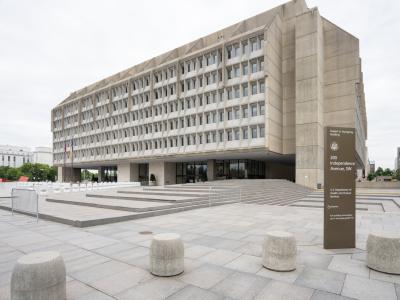Field trial: Rapid TB test speeds treatment but doesn't improve outcomes
A rapid tuberculosis (TB) test that was endorsed by the World Health Organization (WHO) speeded the start of treatment but did not reduce TB-related illness in a field trial in four African countries, according to a study released yesterday in The Lancet.
The trial focused on Xpert MTB/RIF, an automated test to detect both TB and rifampicin resistance. At five primary care clinics in South Africa, Zimbabwe, Zambia, and Tanzania, patients in the 1-year trial were randomly assigned to be tested with MTB/RIF or sputum-smear microscopy. Those who tested negative were empirically managed according to WHO guidelines.
Of 744 patients assigned to MTB/RIF and 758 assigned to microscopy, 185 and 182, respectively, were culture-positive for TB. MTB/RIF had higher sensitivity than microscopy but similar specificity.
Compared with the microscopy group, more MTB/RIF patients had a same-day diagnosis (24% of 744 vs 13% of 758, P < .0001) and same-day treatment initiation (23% vs 15%, P = .0002). But at 2 and 6 months after the start of treatment, TB morbidity as measured by two different scoring systems was the same in the two groups.
The authors said the lack of a difference in morbidity was partly due to high levels of empirical treatment in the microscopy-negative group.
In an accompanying editorial, Christian Wejse of Aarhus University in Denmark writes that, given the high cost of providing MTB/RTF to all peripheral clinics in developing countries, it may make more sense to invest the money in well-trained staff, electricity, and reagents for those facilities. He says MTB/RTV may be best used in regional facilities in areas where multidrug-resistant TB is common.
Although MTB/RTF is "highly appreciated," Wejse says, "this fascinating and promising new tool is unlikely to be the magic bullet that paves the way towards tuberculosis elimination."
Oct 27 Lancet report
Syria begins polio, other childhood vaccine efforts
As Syria awaits confirmation of more than 20 suspected polio cases, the country's Ministry of Health began an immunization campaign on Oct 24 that will target 2.4 million children with vaccines against polio, measles, mumps, and rubella, the United Nations Children's Fund (UNICEF) said in a news release last week.
About 500,000 children in Syria have not been vaccinated against polio in the past 2 years because of uncertainty and access constraints brought on by the nation's civil war. Before the conflict, vaccination coverage of Syrian children was about 95%, UNICEF said.
UNICEF is mobilizing a huge supply operation to ensure vaccinations across the region and is reaching out to partners to help raise community awareness of the importance of vaccinating children, the agency said in the release.
Oct 25 UNICEF news release
Narrow-, broad-spectrum approaches to pneumonia appear similar
Narrow-spectrum antibiotics appear to be as effective as broad-spectrum choices for community-onset pneumonia (CAP) in kids and as cost effective, according to a large study today in Pediatrics.
Investigators studied data from 43 US children's hospitals from 2005 to 2011. In the study period 13,954 children who had CAP received ceftriaxone/cefotaxime (broad spectrum), and 1,610 received ampicillin/penicillin (narrow spectrum).
The median length of stay for both groups was about 3 days, and rates of admission to intensive care (1.1% broad spectrum; 0.8% narrow spectrum) and readmission rates (2.3% vs 2.4%) were similar. Median hospitalization costs were $3,992 for broad-spectrum therapy and $4,375 for narrow spectrum.
The authors concluded, "Clinical outcomes and costs for children hospitalized with CAP are not different when treatment is with narrow- compared with broad-spectrum therapy."
Oct 28 Pediatrics abstract











